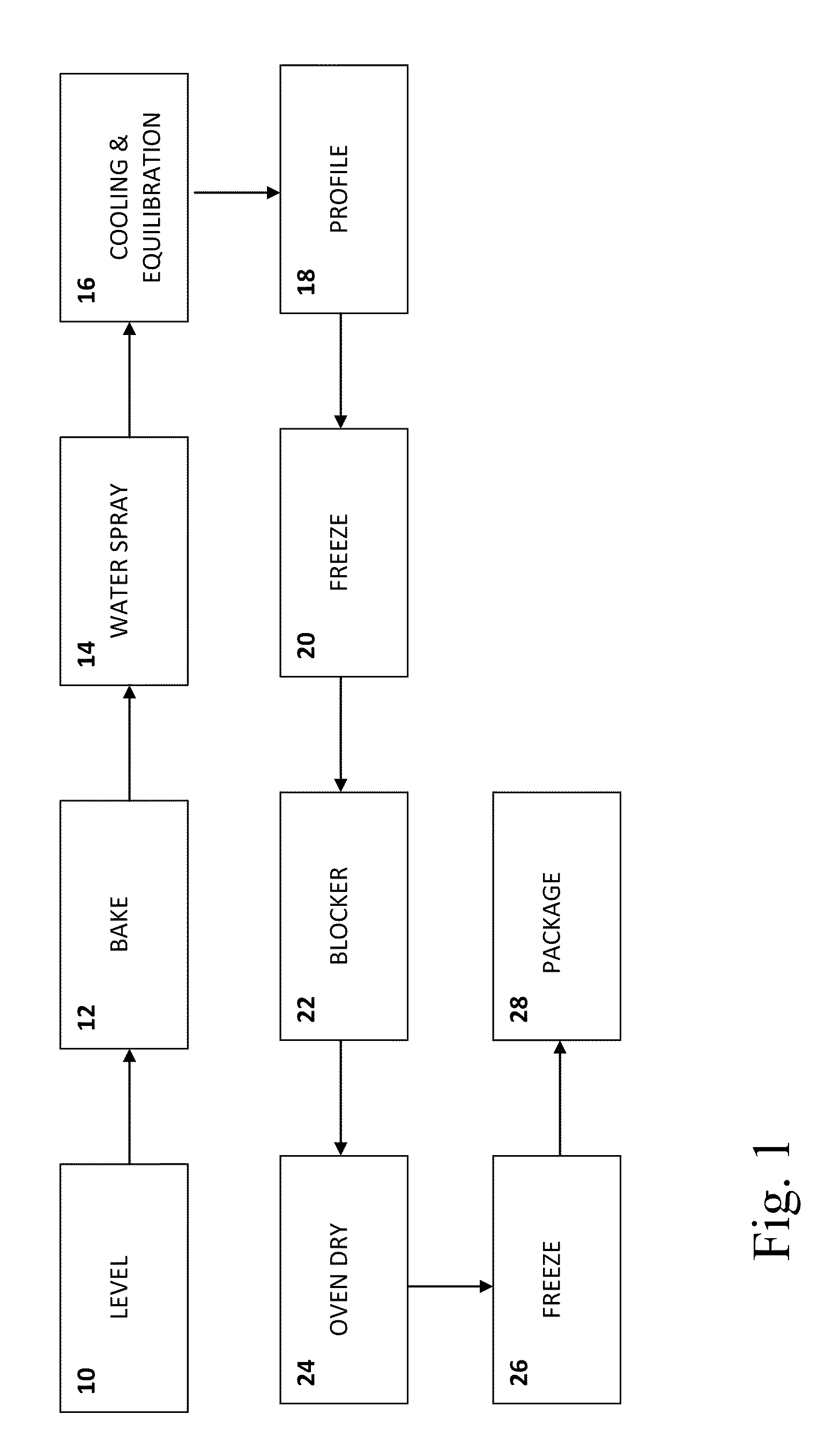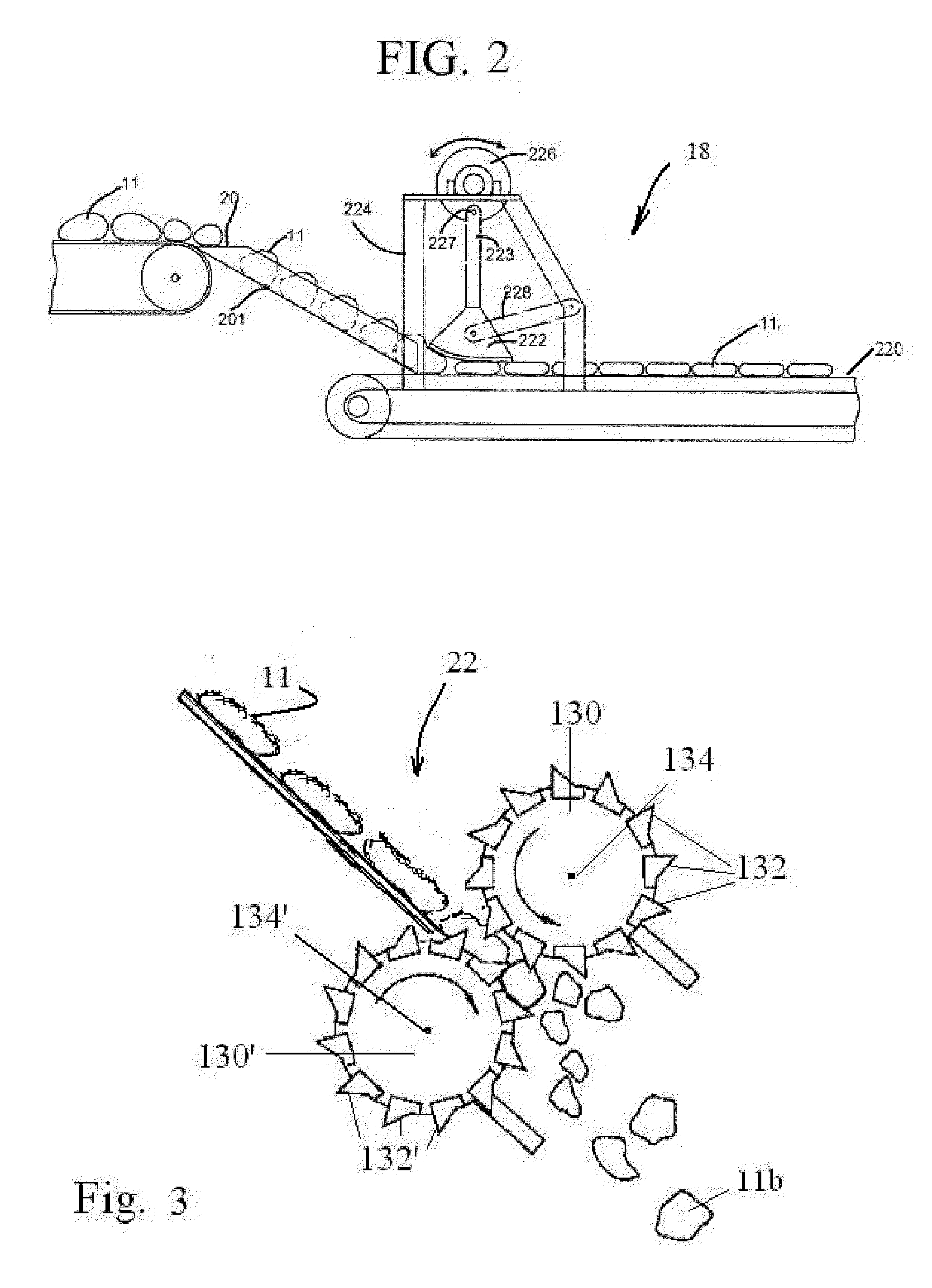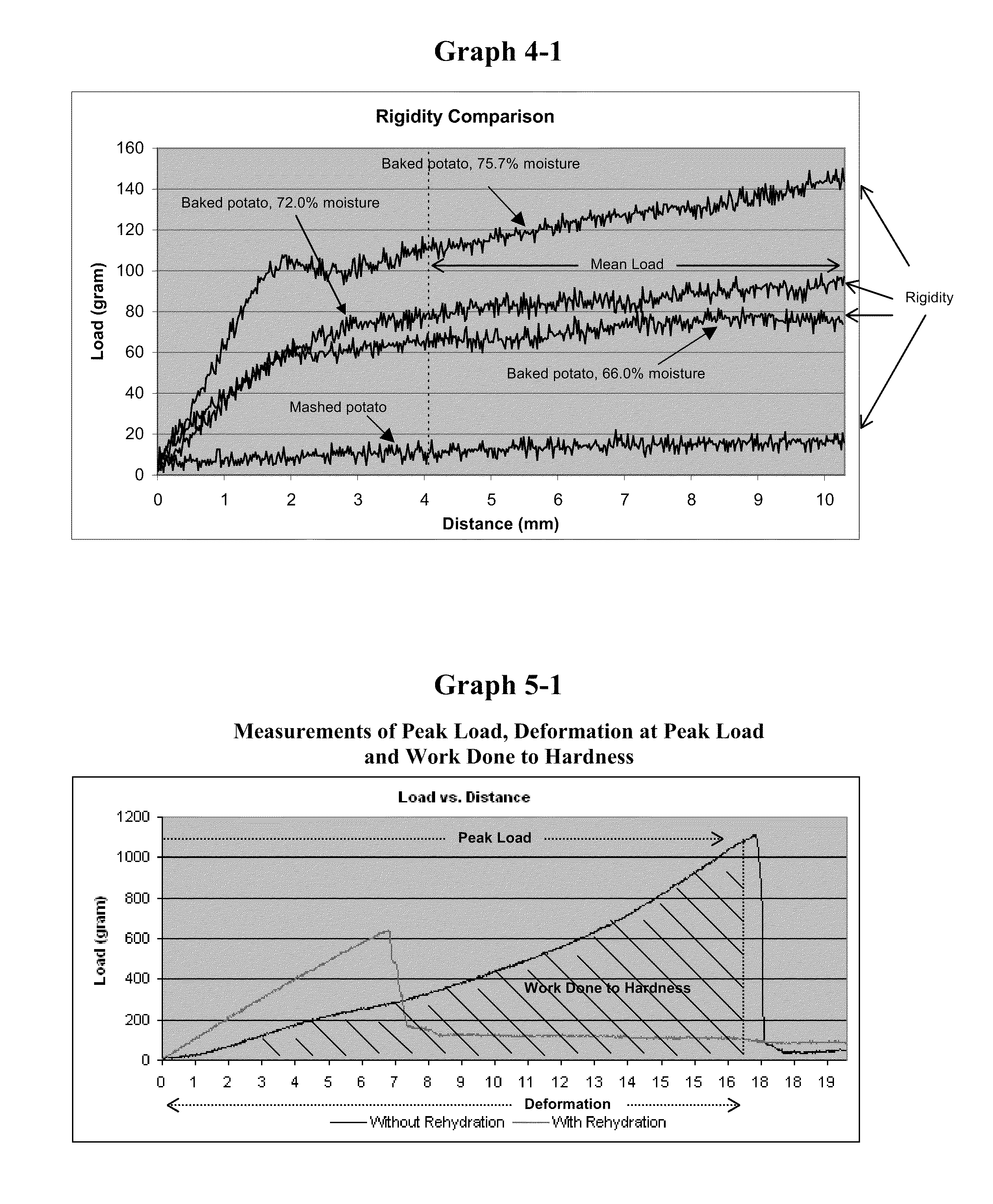Friable, baked potato pieces and process
a technology of baked potatoes and pieces, applied in the field of new potato product, can solve the problems of under-baked baked potatoes with 75.7% moisture, lack of optimal baked potato flavor, over-baked baked potatoes, etc., and achieve the effect of reducing the moisture content of the pieces, easy measurement in portion-controlled amounts, and toughening the surfa
- Summary
- Abstract
- Description
- Claims
- Application Information
AI Technical Summary
Benefits of technology
Problems solved by technology
Method used
Image
Examples
example 1
[0067]This example illustrates the preparation of potato products according to the invention from Russet variety potatoes.
[0068]Russet Norkotah potatoes having an average weight of about 6 ounces were processed according to a process as outlined in FIG. 1. The potatoes were scrubbed and arranged in a level layer on a mesh conveyor. The potatoes were passed through an oven maintained at 420° F. for about 55 minutes, during which they were baked to a moisture content of about 72%. The potatoes were then passed down channels while being sprayed with water for a total hydration time of about 2.25 minutes to increase the moisture content of the potatoes to about 73.5%. The potatoes were then conveyed under a profiling apparatus to flatten the potatoes to a thickness of about % of an inch. The flattened potatoes were then passed through a commercial freezer having a first zone at a temperature of about 0° F. and a second zone at a temperature of about −40° F. for about 45 minutes, until t...
example 2
[0072]This example illustrates the preparation of potato products from red potatoes according to the invention.
[0073]The process of Example 1 is repeated but the oven temperatures for the oven-heating step will have temperature zones set at 420° F., 360° F. and 350° F. The zones are of substantially equal length and the total time in the oven is on the order of about 19 minutes. Processing will be sufficient to provide a browning effect to a light golden-brown color and form a skin on the exterior surface of exposed potato pulp, both important to the preparation of the best product, without significantly reducing the moisture content of the pieces.
example 3
[0074]This example illustrates the preparation of potato products ready for “oven frying”. Frozen potato pieces as prepared in Example 1 were rebaked at 335 degree F. for 25 minutes then par-fried at 390° F. for 15 seconds then frozen. For final preparation, they were Baked in a conventional oven at 450° F., 10 minutes. The result was a oven-able product has good texture and flavor, and not an excessively oily mouthfeel.
[0075]For all of the examples variations in times and temperatures will be made as equipment changes, but the person skilled in the art will be able to reproduce the important aspects of the invention by using the above as guidelines.
PUM
 Login to View More
Login to View More Abstract
Description
Claims
Application Information
 Login to View More
Login to View More - R&D
- Intellectual Property
- Life Sciences
- Materials
- Tech Scout
- Unparalleled Data Quality
- Higher Quality Content
- 60% Fewer Hallucinations
Browse by: Latest US Patents, China's latest patents, Technical Efficacy Thesaurus, Application Domain, Technology Topic, Popular Technical Reports.
© 2025 PatSnap. All rights reserved.Legal|Privacy policy|Modern Slavery Act Transparency Statement|Sitemap|About US| Contact US: help@patsnap.com



